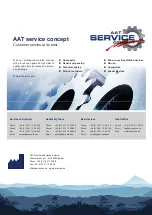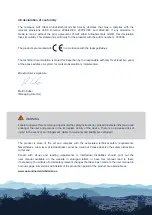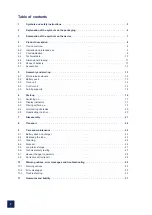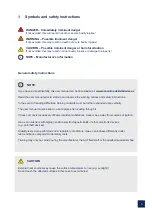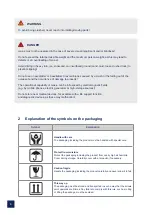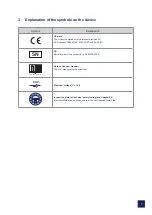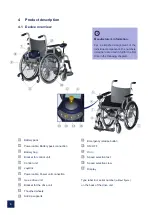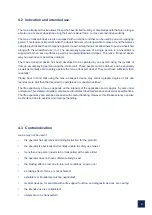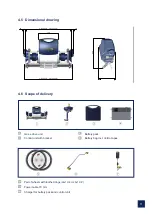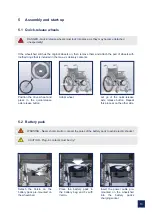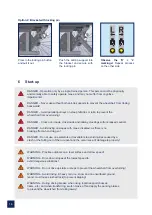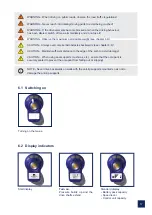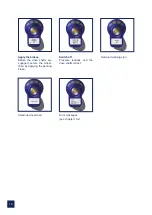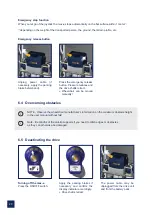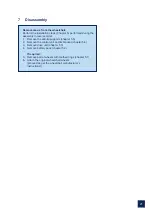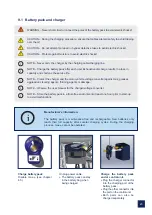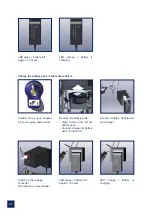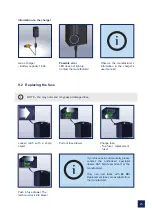
10
4 4 Technical data
WARNING - Do not exceed the total permissible weight and the maximum weight of the person,
as this may lead to defects or an overloading of max-e!
i
NOTE - Observe the technical data.
Technology
max-e
Drive dimensions
Height = 280 mm; Width = 300 - 700 mm; Depth = 153 mm
Own weight
Drive unit = 8.1 kg;
Battery pack = 10.2 kg;
Control unit = 0.5 kg
power cable = 0.2 kg;
Battery bag incl. Velcro tapes = 0.2 kg
Charger = 0.3 kg;
Total weight (without wheelchair) = 19.5 kg
Total permissible weight
200 kg (person, wheelchair, max-e
(1)
Limit values during construction
From seat width 28, max. 5° camber
Speed forward I backward
6 km/h I 3 km/h
Distance range with a battery charge
up to 16 km
(2)
Climbing ability
up to 20 %
(3)
Batteries
2 x 12 V / 16 Ah
Direct current motor
24 V / 130 W
Noise information
The A-weighted sound pressure level is typically below 60 dB (A)
Switching/actuating forces
Joystick: 3.5 N
Buttons (ON/OFF, horn, speed selection): 0.74 N
Emergency release button = 0.74 N
Static stability downhill
Observe the wheelchair manufacturer’s information
Static stability sideways
Observe the wheelchair manufacturer’s information
Maximum surmountable obstacle height
Observe the wheelchair manufacturer’s information and chapter 6.4
Storing/operating temperature: Device
-20° C to +60° C / -10° C to +50° C
Storing/operating temperature: Battery pack
-20° C to +60° C / -10° C to +50° C
Charging temperature: Battery pack
0° C to 40° C
Vibration information
The weighted RMS value of acceleration, to which the
upper body is subjected, is typically below 2.5 m/s
2
.
Application class
B
Type label with serial number
Drive unit and back of the user manual
(1) Observe the maximum load according to the wheelchair manufacturer's information.
(2) According to ISO 7176-4, the distance range depends on the weight of the transported person, the ground, the terrain profile, the ambient temperature, etc.
(3) Climbing and braking ability also depend on the surface, terrain profile, ambient temperature etc.
Technical changes serve the advancement of the product and we reserve the right to make such changes.


